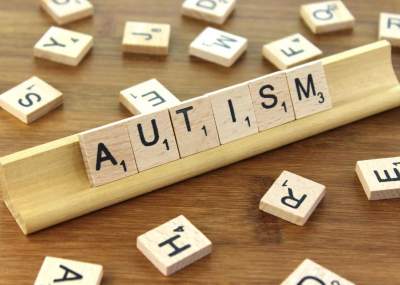What is Autism Spectrum Disorder?

ASD is a disorder of neurobiological origin that affects the configuration of the nervous system and brain function, leading to difficulties in two main areas: communication and social interaction, and flexibility of thought and behaviour.
ASD: Autism Spectrum Disorder
- CAUSE AND ORIGIN: At present, the cause that explains the appearance of ASD is not determined, but a strong genetic involvement in its origin has been determined.
- SPECIFICITY: The condition has core and defining characteristics that are manifested heterogeneously throughout the person’s entire life. This specificity has been reflected in the international classification systems for health, including those for mental health (DSM-5 and ICD-11) that have replaced the term “Generalized Developmental Disorder” with that of “Autism Spectrum Disorder”.
- VARIABILITY: No two people with ASD are the same; it depends on your own personal development and the support you may have, as well as whether or not you have an associated intellectual disability and also on your level of language development.
- INVISIBLE DISABILITY: ASD is not associated with any differentiating physical traits, and only manifests at the level of the person’s cognitive and behavioural skills.
- LIFE CYCLE: It accompanies the person throughout their life, although their manifestations and needs change depending on the different stages of development and the experiences acquired.
- SUPPORT: A comprehensive approach aimed at facilitating the most appropriate individualized, specialized and evidence-based support is necessary to improve each person’s quality of life (while maintaining a gender perspective).
- FAMILIES: It has an impact not only on the person who presents it but also on their family, who offer essential support for a person with ASD.
What are the main characteristics of people with ASD?
The clinical manifestations of ASD vary greatly between people who present it, as do their intellectual function and linguistic abilities. However, all of them share key characteristics in two areas of personal development and function: communication and social interaction, and flexibility of behaviour and thought.
COMMUNICATION AND SOCIAL INTERACTION
Verbal and non-verbal communication skills
The communication difficulties that they can present are manifested both at the level of comprehension and expression.
- VERBAL COMMUNICATION: Some people with ASD have adequate language skills, but find it difficult to use them in reciprocal communication or in the social context in which they are needed. Others do not use verbal language and require the support of Alternative and/or Augmentative Communication Systems (AAC) (they substitute and support oral language, respectively).
- NON-VERBAL COMMUNICATION: People with ASD may experience difficulties in using or extracting the meaning of other people’s gestures or facial expressions, as well as other relevant elements for interaction (eye contact, body posture, etc.), which can lead to some misunderstandings.
Skills for social interaction
Some people with ASD may find it difficult to relate to others, understand their surroundings, and function in certain social situations. It manifests itself, for example, in:
- Unusual or inappropriate social approaches to initiate or react to interactions with other people.
- Problems adapting behaviour to different contexts or social situations.
- Difficulties understanding “unwritten” social rules.
- Difficulties understanding or expressing emotions in a way that is adjusted to the context or situation.
FLEXIBILITY OF BEHAVIOUR AND THOUGHT
Way of thinking and behaving
People with ASD may find it difficult to respond flexibly to the demands of different contexts and adjust their way of thinking and behaving. Therefore, adapting to changes or unforeseen situations can be a great effort and generate discomfort, anguish or anxiety. This can manifest itself, for example, in insisting that things always happen in the same way; in the disposition of a limited repertoire of specific interests or in rigid and repetitive patterns of behaviour (like repeating words or phrases over and over again, in exactly the same way, known as echolalia).
Sensory stimuli
Some people with ASD present alterations in the processing of sensory stimuli, which can manifest itself in intense discomfort when faced with certain sounds, smells, lights, tastes or textures; unusual interest in sensory aspects of the environment (such as insistence on smelling or touching certain things); fascination with lights, shiny or spinning objects, or apparent indifference to pain or temperature.
Capabilities of people with ASD
The characteristics that define ASD are not only translated into difficulties, but are also associated with a series of capacities in people who are part of this group, such as:
- Meticulousness
- Curiosity about very specific topics
- Specialized knowledge on topics of their interest
- Sincerity
- Honesty
- Respect and compliance with the established rules
- Attention to detail
- Good adaptation and follow-up of routines
- Good competencies in mechanical and repetitive tasks
- Tendency to be very logical
- Ability to listen without prejudice
There are people with ASD who have brought great changes in society thanks to their abilities. One example of this is the zoologist Temple Grandin, who designed a system of livestock facilities that improved the welfare and productivity of animals. His capacity for visual thinking allows him to devise three-dimensional simulations and designs in his head, which together with his visual acuity and attention to detail revolutionized the handling and movement of livestock. Currently, this system is used in livestock companies in the US, Canada and Europe.
The experience of Dr. Temple Grandin is an example of how the capacities of people with ASD can contribute in a real and effective way to a positive transformation of society if we give them the possibility to do so.
